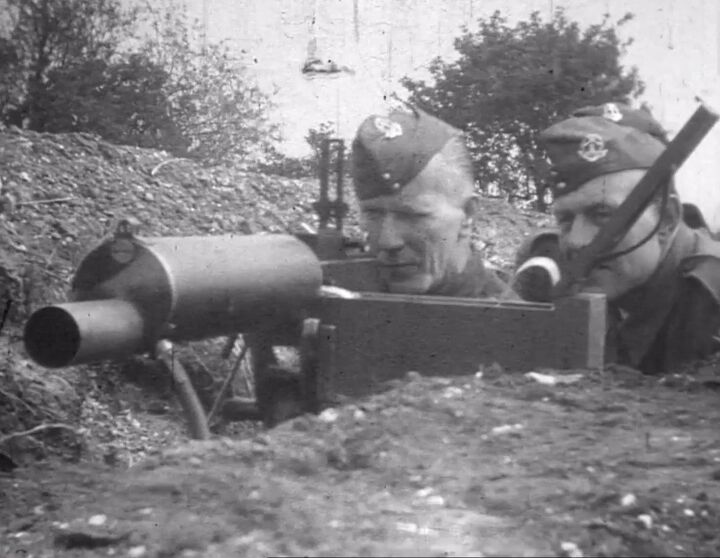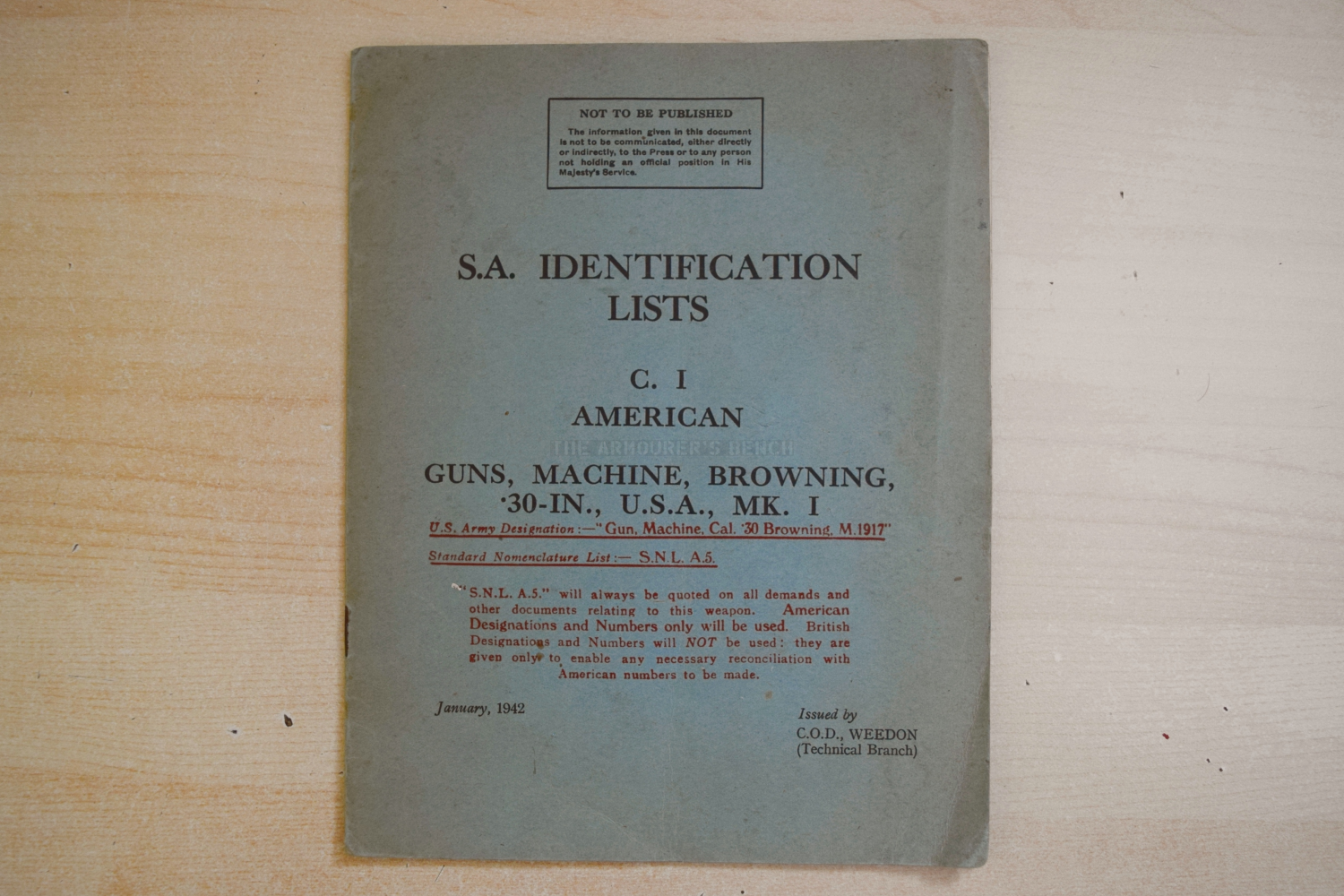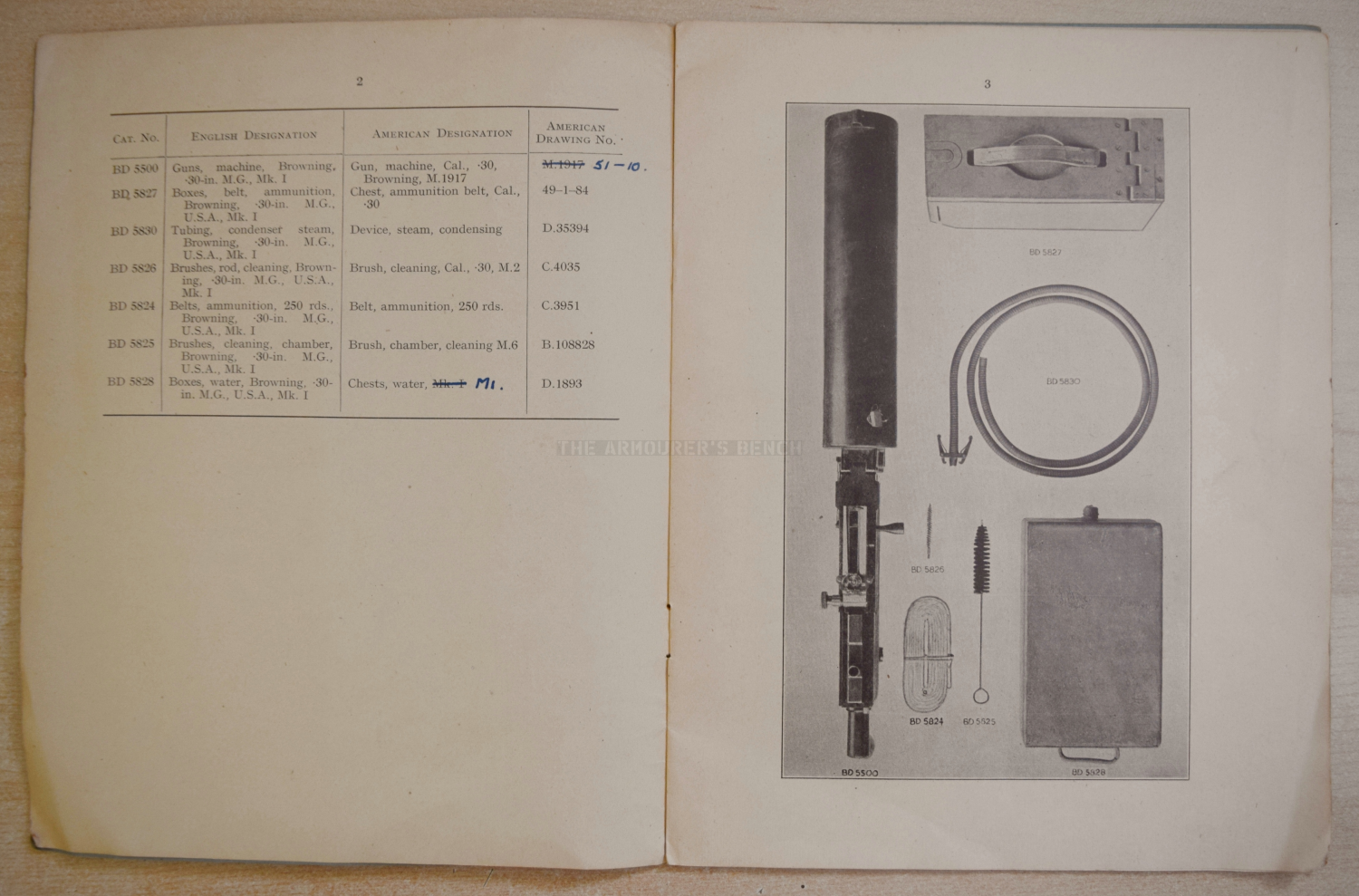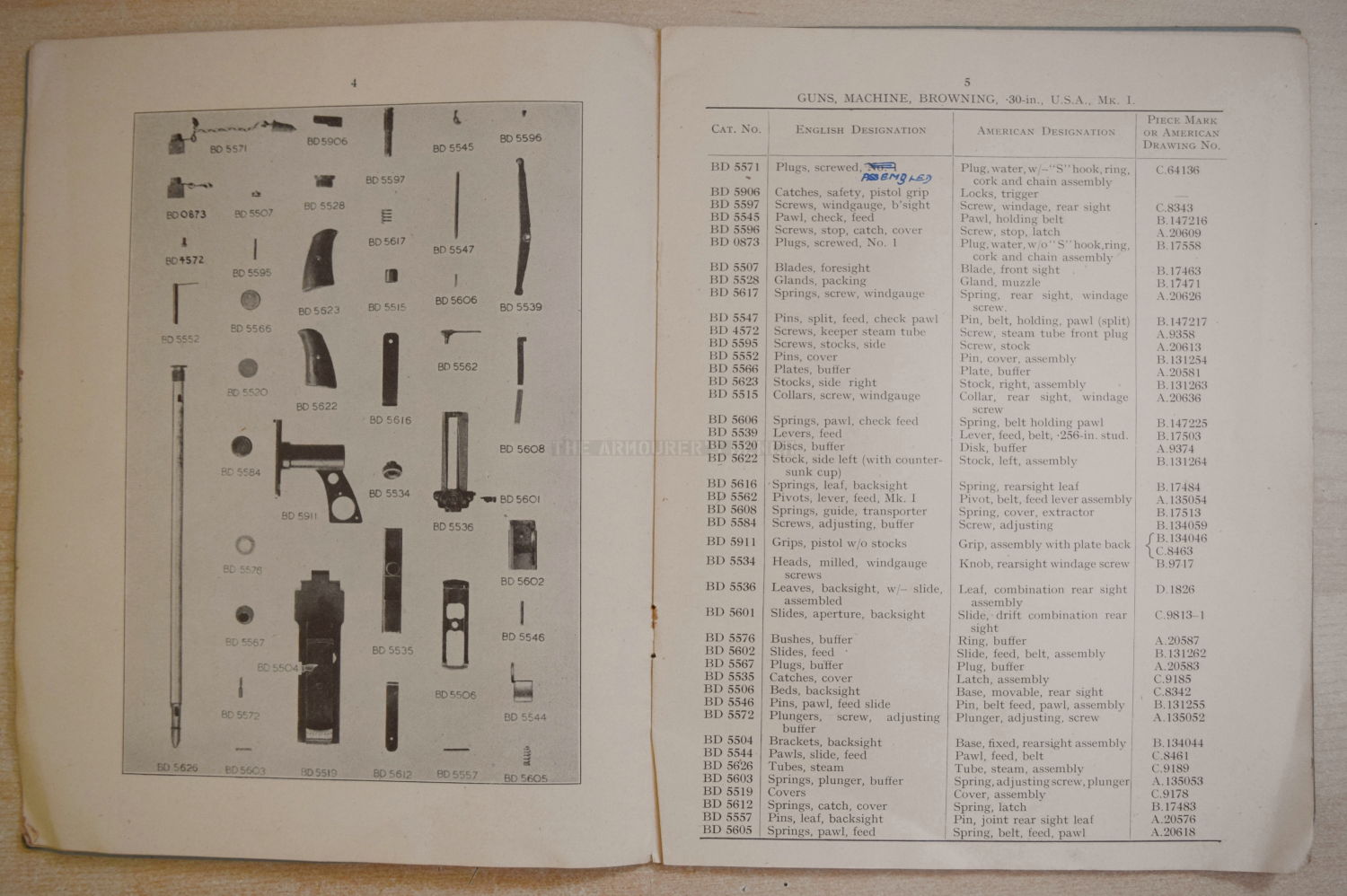During the Second World War, Britain’s volunteer militia, the Home Guard, were extensively issued with American .30 calibre Browning M1917 machine guns. These water-cool medium machine guns contributed significant firepower to the Home Guard fighting units. They began to enter service in late 1940 and by November 1942 there were some 6,330 in service. For a force initially (and relatively briefly depending on the location of the unit) armed with makeshift weapons and old rifles, the M1917 Brownings were a formidable weapon.
Machine Guns @ TFB:
- FN Herstal’s New Ultralight Machine Gun: EVOLYS
- Ukrainian Snipex LASKA K-2 Heavy Machine Gun
- The SIG LMG-68 Light Machine Gun: Next Gen Firepower
- Machine Gun Corps: Important WW1 Book To Be Reprinted!
But with new weapons come logistical headaches. With so many guns in service there needed to be a way of describing, categorising and identifying the weapon’s parts so an identification list booklet was drawn up, in January 1942, giving the American and British nomenclature for the gun’s individual parts.
The British and US Army’s had completely different nomenclature for parts. Essentially two countries separated by a common language. For example, in British terminology, the gun was designated the ‘Guns, machine, Browning, .30in M.G. Mk.I’ while in American it was known as the ‘Gun, machine, Cal. 30, Browning, M.1917’. When it comes to the component parts as simple as the water condenser can, it goes even worse – the British terminology for the can was ‘Boxes, water, Browning .30in M.G. USA. MkI’ while in the US it was described as ‘Chests, water M1.’
I took a look at the manual in this video:
The booklet compiled by the Central Ordnance Depot at Weedon draws on the US Army Ordnance Corps’ Standard Nomenclature List A5 for the American parts’ names. The purpose of the booklet was basically to allow soldiers familiar only with British designations to know the necessary American nomenclature for the various parts. This would have been useful for when requisitioning replacement parts.
The short booklet is only a dozen pages long and had a photograph of the disassembled parts with the part number next to each and on the opposite page was the ‘English Designation’, ‘American Designation’ and the ‘American Drawing Number’. In this example, a couple of mistakes have been corrected by hand in blue ink.
The booklet is a small piece of a larger logistical puzzle with much of the Home Guard armed with completely different weapons to the regular British Army. It gives us a glimpse of the logistical efforts made to effectively equip the volunteer force. Despite the weapons being of different calibres (they included .30-06 US Model 1917 Rifle, Lewis Guns and M1918 Browning Automatic Rifles) they gave the Home Guard much needed firepower. Had there been an invasion, John Browning’s M1917 and some steady Home Guard would have made the Nazi’s job that much more difficult.
 Your Privacy Choices
Your Privacy Choices




